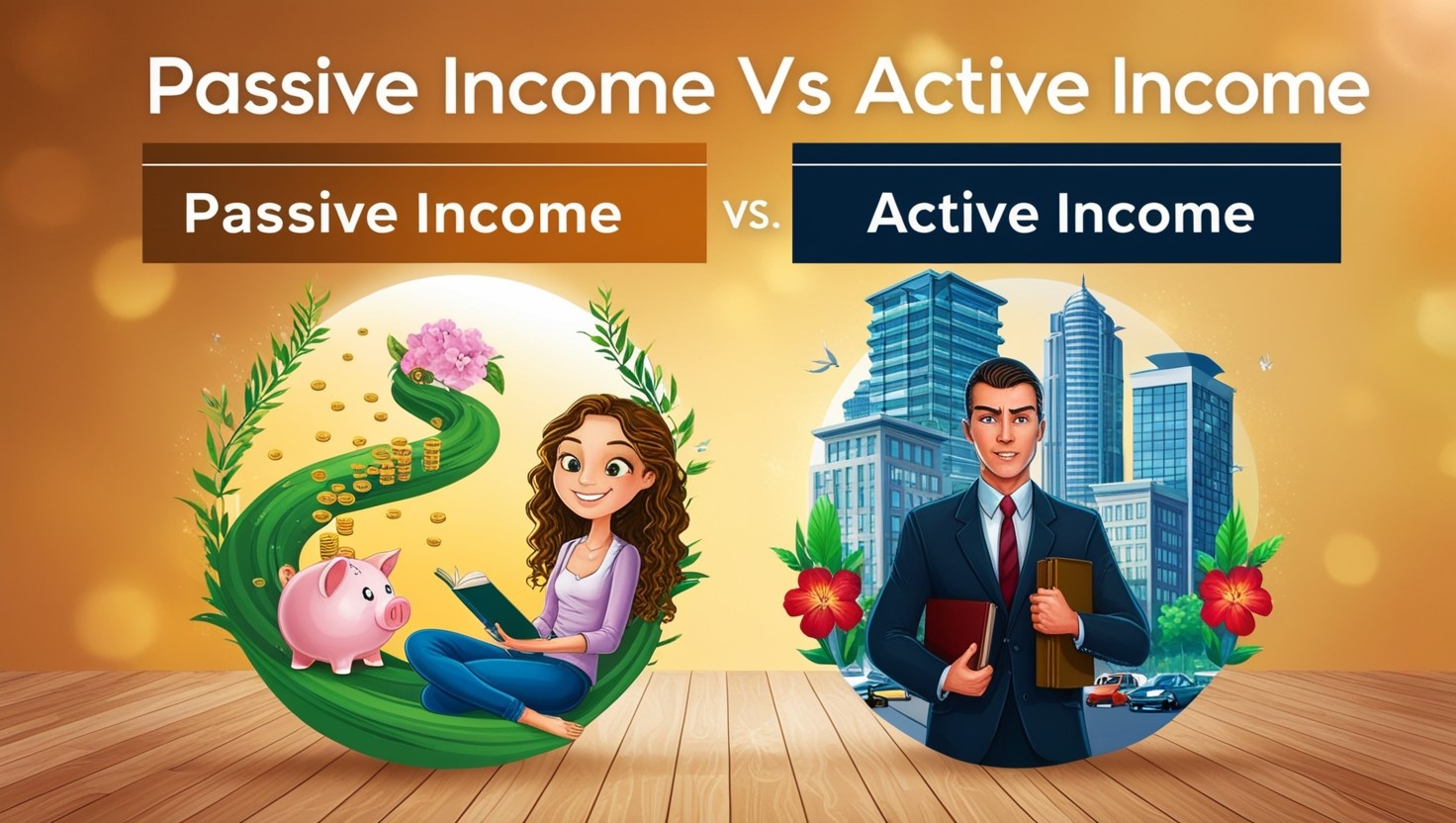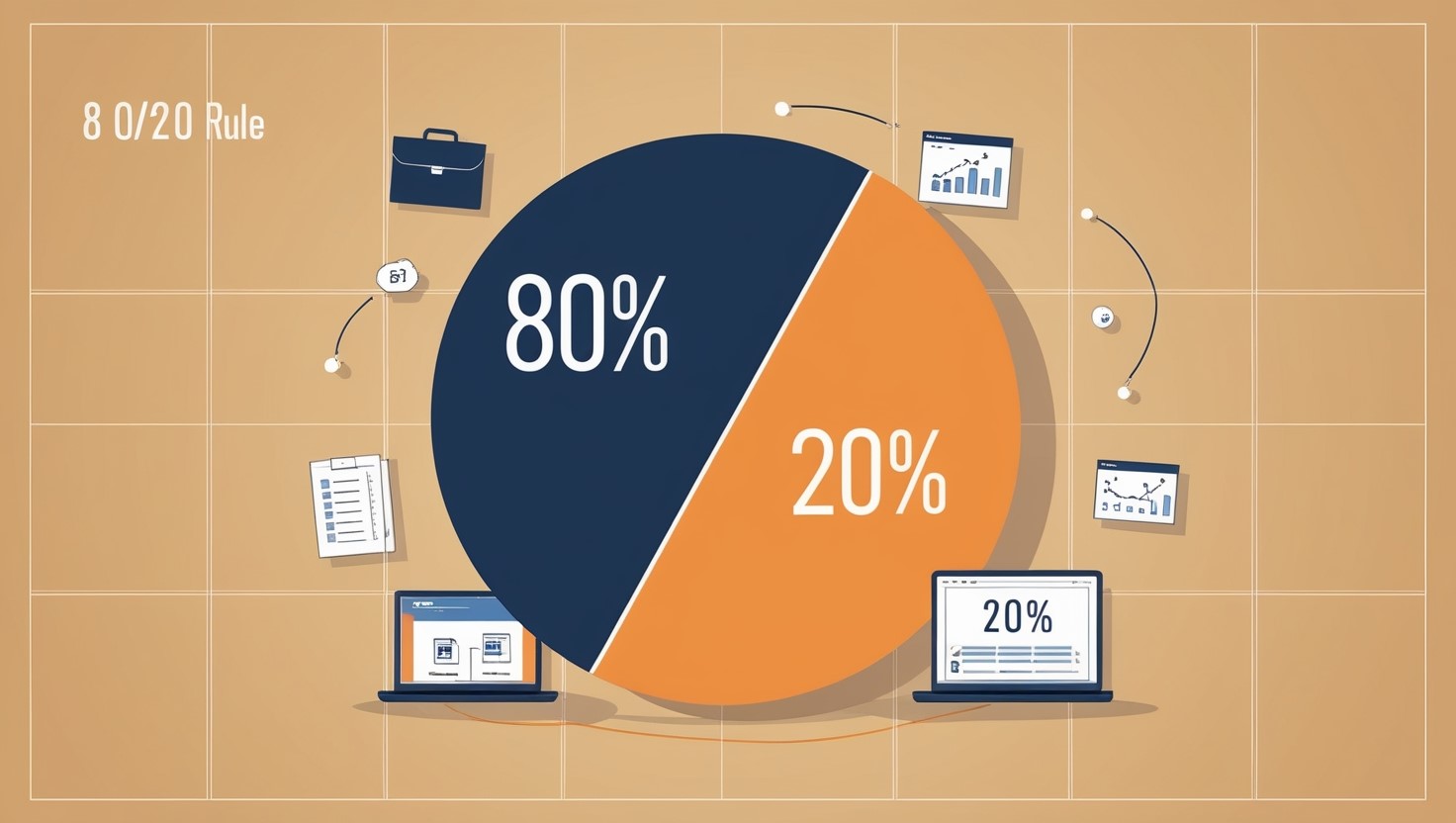When it comes to earning money, we often hear about “working hard” and “building wealth.” But what does that really mean? For most people, it’s all about the balance between time, effort, and the results they bring. The conversation often boils down to two key terms: passive income and active income. They might sound like jargon, but these are essential concepts to understand if you’re serious about taking control of your financial future.
Active income is what many of us are most familiar with—it’s the paycheck you earn from your day job, the salary that shows up in your bank account after trading a chunk of your time and energy. It’s straightforward: You work, you get paid. But as we strive for financial security, freedom, and maybe even early retirement, active income alone might not cut it. That’s where passive income enters the picture.
Unlike active income, passive income doesn’t require you to be tied to the clock. It’s money that keeps flowing with minimal ongoing effort, once the groundwork has been set. Think of it like planting seeds: there’s work involved at the start, but soon, the fruits start growing on their own. This difference is what draws so many people toward creating passive income streams—it’s the promise of making money while you sleep.
In this article, we’ll dive into the specifics of passive income versus active income, how they differ, and which might be the right fit for your financial goals. Both forms of income have their advantages, and understanding how to utilize them together can be the key to financial independence. Let’s explore the distinction and discover how to strike the perfect balance between the two.
What is Passive Income?
Passive income is often regarded as the ultimate financial dream—money that flows in consistently with minimal ongoing effort. It’s the idea of earning without the day-to-day grind or having to actively trade your time for money. Unlike the typical 9-to-5 job or freelance gig where you’re paid based on the hours you work or the tasks you complete, passive income comes from assets or investments that generate revenue on their own.
The beauty of passive income lies in its potential to create financial freedom. Imagine having streams of money coming in whether you’re working, relaxing on a beach, or even asleep. However, it’s important to understand that passive income isn’t entirely “effortless.” In most cases, it requires significant upfront work—whether that’s building an online business, investing in real estate, or creating content like books or courses. But once the initial setup is complete, the income continues with relatively little ongoing effort.
Examples of passive income include rental properties, dividend stocks, royalties from intellectual property (like books, music, or patents), and income from online businesses that can run on autopilot, such as digital products or affiliate marketing. Real estate is a classic example: you invest in a property, rent it out, and earn rental income month after month. Sure, there’s occasional upkeep, but the income keeps coming in without you having to be actively involved day-to-day.
The key advantage of passive income is that it scales better than active income. Since it doesn’t rely on your continuous presence or work, it has the potential to grow exponentially. Whether you’re looking to build wealth, save for retirement, or achieve financial independence, creating multiple streams of passive income can be a powerful strategy.
That said, passive income isn’t entirely risk-free. Investments can fail, properties can lose value, and markets fluctuate. So while it might seem like the golden ticket, it requires careful planning, time, and sometimes a willingness to take calculated risks. Still, when done correctly, passive income is one of the most effective ways to build long-term financial security.
What is Active Income?
Active income is the most familiar and common form of earning for most people. It’s the money you make directly as a result of your efforts, typically in exchange for time, skills, or labor. Whether you’re an employee earning a salary, an hourly wage worker, or a freelancer paid per project, the principle is the same: you’re actively working to generate income. The more hours you work or the more tasks you complete, the more money you earn.
For example, a teacher earns a salary based on their time spent in the classroom and preparing lessons. A lawyer might bill clients by the hour, and a freelance graphic designer might charge per completed design. In all these cases, the individual is directly trading their time and effort for a paycheck. When they stop working, the income stops, too—there’s a direct correlation between work and earnings.
Active income offers a sense of immediacy and predictability. You put in a certain number of hours or complete a certain task, and you’re paid accordingly. It’s straightforward and easy to understand, which is why it’s the predominant income model. However, the downside is that it requires ongoing effort. If you stop working, the income stream dries up. This can be limiting in terms of financial growth and freedom because there are only so many hours in the day, and your earning potential is capped by the amount of time you have to work.
The stability and consistency of active income can be a huge advantage. For instance, salaried employees often enjoy benefits like health insurance, paid vacations, and retirement plans—perks that passive income streams don’t typically offer. There’s also a sense of control: you know how much you’ll make in a given month, allowing for more straightforward budgeting and financial planning.
However, active income doesn’t offer the same potential for long-term financial freedom as passive income does. It’s tied to your ability to keep working, which can become exhausting or impossible over time. Moreover, active income rarely offers the exponential growth potential that passive income can. You’re often trading time for money, which can feel like a never-ending cycle. But for many, active income remains a reliable and necessary part of their financial portfolio, especially when paired with passive income sources for greater financial security and flexibility.
Key Differences Between Passive and Active Income
While both passive and active income have the potential to increase your financial stability, they function in fundamentally different ways. Understanding the key differences between them is essential for anyone looking to diversify their income streams and achieve greater financial freedom. Let’s break down the most important distinctions between passive and active income in terms of effort, time commitment, and long-term potential.
Effort and Time Commitment
Active income requires ongoing effort—whether that’s working a 9-to-5 job, managing a freelance career, or running a business where you’re constantly involved in daily operations. The moment you stop working, your income stops too. In contrast, passive income is built on systems or assets that, once established, can generate revenue with minimal effort. You might need to maintain or monitor your passive income sources occasionally, but the idea is that the income continues to flow even when you’re not actively working for it.
For instance, if you’re a landlord, the rent from your properties continues to come in every month even if you’re on vacation. Meanwhile, a person with a full-time job must continue working to receive their salary or wages. This makes passive income highly attractive to those seeking time freedom, as it removes the direct relationship between time worked and money earned.
Income Potential and Scalability
Active income often has a ceiling—there are only so many hours you can work in a day. Whether you’re billing clients hourly or earning a fixed salary, your income is tied to your available time and energy. Passive income, on the other hand, has the potential for exponential growth. For example, an investment in a real estate property or dividend-paying stocks can continue to generate returns even as your involvement decreases over time.
Additionally, passive income streams are often scalable, meaning you can increase your earnings without a proportional increase in effort. You could own several rental properties or invest in a variety of different businesses, expanding your income without significantly increasing your workload. Active income, however, remains limited by your personal capacity to work.
Risk and Stability
Active income tends to be more stable and predictable. A regular paycheck or consistent freelance work provides a dependable stream of money that makes it easier to budget and manage finances. Passive income, while offering higher potential rewards, often comes with more risk. Investments can fluctuate, tenants might default on rent, or a business venture might take time to become profitable.
However, the long-term benefits of passive income often outweigh the initial risk, especially if you diversify your income streams. By combining active and passive income sources, you can create a more balanced and secure financial future.
Here’s a table that highlights the key differences between active and passive income:
| Category | Active Income | Passive Income |
|---|---|---|
| Effort | Requires continuous effort and time | Requires upfront effort, but minimal ongoing work |
| Time Commitment | Linked to time spent working | Not directly tied to time once established |
| Income Potential | Limited by personal capacity | Can be scalable and grow exponentially |
| Stability | Generally stable and predictable | Can be volatile, but offers long-term growth |
| Risk | Lower risk; income stops if work stops | Higher risk; income continues with minimal work |
| Long-term Freedom | Limited, as income ceases without ongoing work | Provides long-term financial freedom |
| Examples | Salary, hourly wages, freelance work | Real estate, stock dividends, royalties |
| Scalability | Difficult to scale without increasing effort | Easily scalable through investments or assets |
| Dependency | Depends entirely on individual effort | Depends on systems and assets generating revenue |
| Initial Investment | Low (only time and skill required) | May require financial or time investment upfront |
While both forms of income have their advantages, the key is to create a balance that fits your financial goals and lifestyle. Many people use active income as a foundation while building passive income streams for greater long-term security. Passive income offers the chance to break free from the cycle of trading time for money, making it a powerful tool for achieving financial independence.
Which is Right for You?
Determining whether passive income or active income is the right fit for you involves a thorough understanding of your personal circumstances, goals, and preferences. Both income types offer unique benefits and challenges, so the decision ultimately hinges on your lifestyle, financial objectives, and risk tolerance.
If you thrive on routine and find satisfaction in hands-on work, active income might be your best option. Many people appreciate the stability that comes with a regular paycheck or freelance contracts. If you’re just starting your career or if you’re looking to build experience in your field, active income can provide valuable learning opportunities and the chance to network with others. It offers immediate rewards for your efforts, making it a good choice for those who prefer a more traditional approach to earning money.
On the other hand, if you value freedom and flexibility, passive income might align more closely with your aspirations. This income type allows you to step back from daily responsibilities and create a lifestyle that isn’t solely focused on work. If you’re interested in building long-term wealth without the need for constant labor, investing in passive income sources such as real estate, stocks, or businesses can be advantageous. It’s particularly appealing for those who are willing to put in the initial effort or investment to create a system that generates income over time.
Consider also your financial situation. If you have existing savings or capital to invest, exploring passive income options could be a viable route. However, if you’re just starting out and need immediate cash flow, focusing on active income sources might be a more prudent approach.
Additionally, think about your risk tolerance. Active income generally carries less risk but also less potential for significant growth. Passive income, while it can yield higher returns, often involves more uncertainty. It’s essential to evaluate how much risk you’re comfortable with and how it aligns with your overall financial strategy.
Lastly, consider your long-term goals. Do you envision a life where you gradually transition into retirement and want to build a portfolio that supports you? Or are you more focused on maximizing your current income and advancing your career? Your answers will guide you toward the right income strategy.
Ultimately, many people find success in blending both active and passive income. This hybrid approach allows you to leverage the stability of active income while also building passive income streams for future financial freedom. By assessing your situation carefully and aligning your income strategies with your goals and preferences, you can create a balanced approach to achieving the financial success you desire.
Case Study of Successful People Who Use Both
Many successful individuals have harnessed the power of both active and passive income to build their wealth and achieve financial independence. These examples highlight how a blended approach can lead to long-term success.
One notable example is Tony Robbins, the renowned life coach and motivational speaker. Robbins initially built his wealth through active income by conducting seminars and selling coaching sessions. His hard work and dedication to helping others allowed him to establish a strong personal brand and a loyal following. However, he also recognized the value of passive income. Robbins has invested in various businesses and real estate ventures, allowing him to earn money without being directly involved in day-to-day operations. His ability to balance both income types has not only diversified his earnings but also provided him with the freedom to pursue new opportunities.
Another successful figure is Robert Kiyosaki, the author of the best-selling book “Rich Dad Poor Dad.” Kiyosaki emphasizes the importance of financial education and building assets that generate passive income. Initially, Kiyosaki relied on active income through his career and entrepreneurial efforts. Over time, he shifted his focus toward investing in real estate and other assets that produce cash flow. This transition allowed him to create a steady stream of passive income while still maintaining his active income through speaking engagements and workshops. Kiyosaki’s journey illustrates how integrating both income strategies can lead to significant wealth accumulation.
Oprah Winfrey is another prime example of someone who effectively utilizes both active and passive income. Winfrey achieved fame and fortune through her active work as a television host and producer. Her dedication to her craft and ability to connect with audiences led her to become one of the most influential figures in media. Yet, Winfrey has also diversified her income by investing in various ventures, including her own production company and lifestyle brand. These investments generate passive income, allowing her to expand her empire while maintaining her active role in the industry.
Lastly, consider Gary Vaynerchuk, the entrepreneur and social media expert. Vaynerchuk made his mark through active income by growing his family’s wine business and establishing his own marketing agency. His work ethic and innovative thinking propelled him to success in the business world. However, Vaynerchuk has also embraced passive income through investments in startups and content creation. By creating a personal brand and sharing valuable insights, he has developed multiple income streams, showcasing the benefits of balancing both active and passive approaches.
These examples illustrate that successful individuals often find a way to blend active and passive income. By doing so, they create a robust financial foundation that supports their goals and allows for greater freedom in their personal and professional lives. Whether through investments, business ventures, or strategic brand building, the ability to leverage both income types can lead to sustained success and wealth accumulation.
Final Thoughts
Understanding the distinction between passive and active income is crucial for anyone looking to build wealth and achieve financial freedom. Active income, derived from direct efforts such as salaries and hourly wages, often requires continuous work and time investment. This type of income can provide immediate financial stability but may not offer the same long-term benefits or flexibility as passive income streams.
On the other hand, passive income represents a more sustainable path to wealth. By investing in assets that generate income without ongoing effort, individuals can free up their time to focus on other pursuits or simply enjoy life. The beauty of passive income lies in its ability to create financial security and independence, allowing for a more balanced lifestyle.
Both income types have their place in a well-rounded financial strategy. While active income is vital for covering immediate expenses and building a financial foundation, integrating passive income sources can lead to greater financial resilience and freedom. As you navigate your financial journey, consider how you can leverage both active and passive income to meet your goals.
Ultimately, the decision of which income strategy to pursue should align with your personal financial situation, lifestyle preferences, and long-term aspirations. By learning from the experiences of successful individuals who have embraced both income streams, you can carve out a path that suits your unique needs and dreams. Embrace the opportunity to diversify your income, invest in your future, and take control of your financial destiny. Whether you’re starting with a small side hustle or exploring larger investments, the journey toward financial empowerment begins with understanding the power of both active and passive income.



